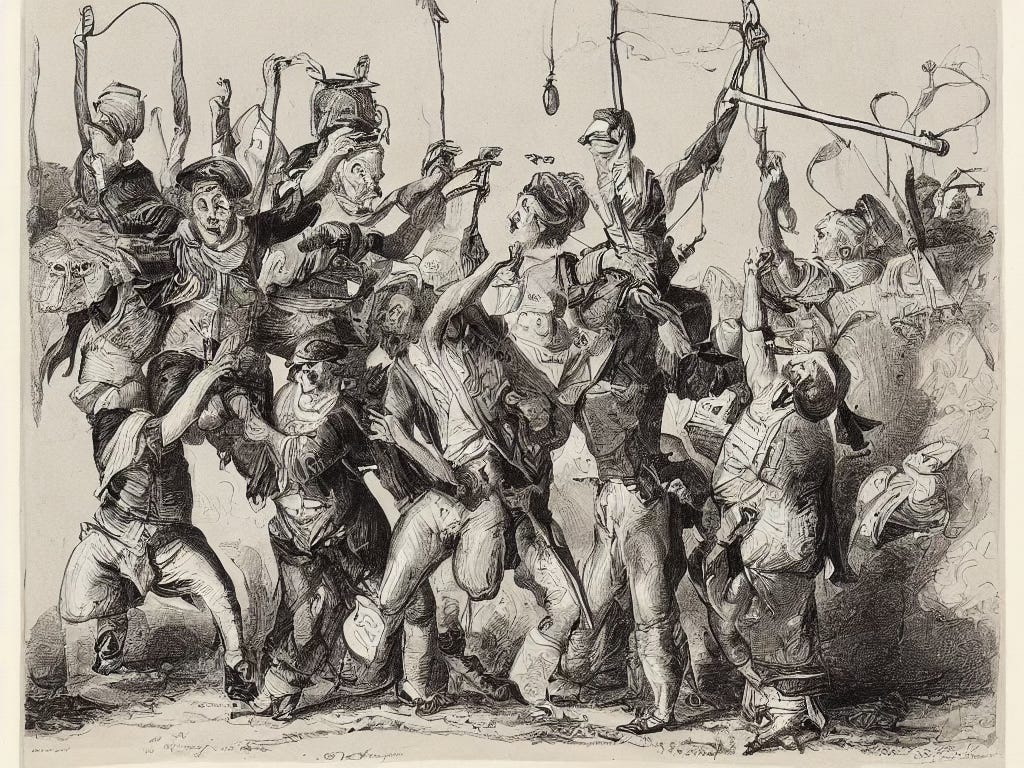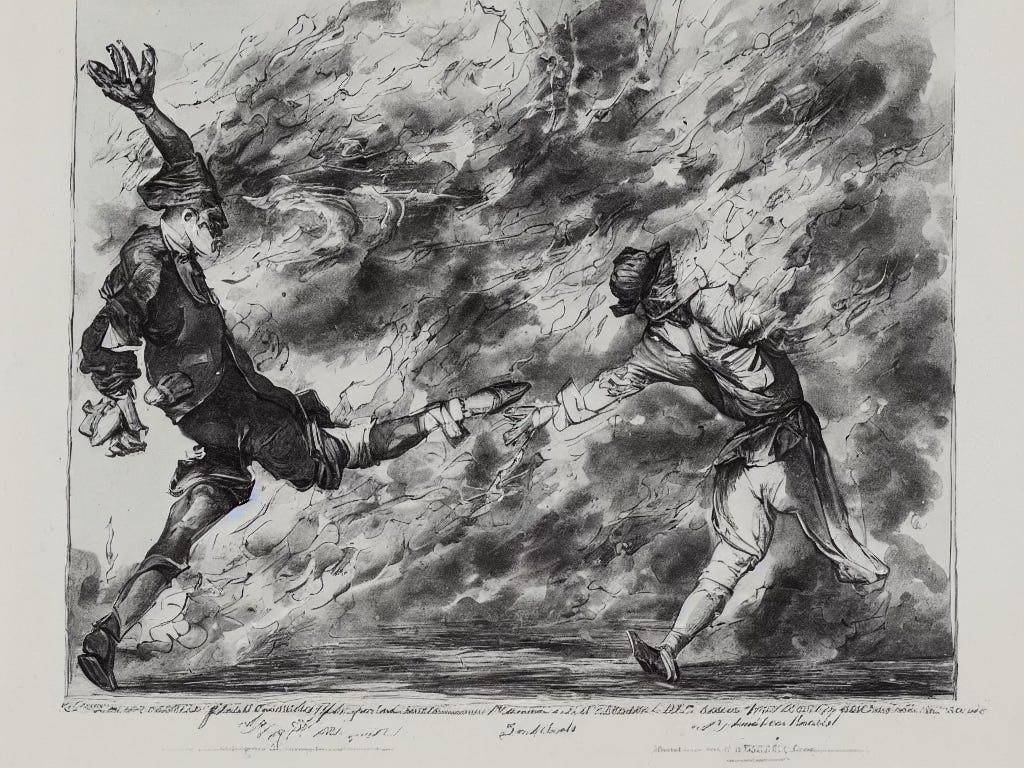One man’s ultramarathon is another man’s…
The son of one of Rosy’s friends is an ultramarathon runner. In other words, he runs phenomenal distances in extraordinarily short times. I have huge admiration for him and his acheivements, not to mention his mum, who often crews for him. He holds the record for the 100-mile Arc of Attrition point to point race that follows the Cornish coastal path all the way from Coverack on the south coast to Porthtowan on the north.1 He ran overnight in 19 hours, 12 minutes and 48 seconds with just a headlamp to light his way in the dark. That’s around 5 miles an hour, by the way.
Huge thanks to my mum for crewing she was looking dapper in high viz this year, to my wife Laura, who even managed to persuade my very teenage son to come out and cheer me on, and of course all the supporters out there cheering even at 4 in the morning.
Of course, this kind of ultrarunning requires huge dedication and time, not just doing the runs but training over long distances.
Recently his wife asked if his mum could take the children with her to watch the race. Thinking of all the time he must spend focussed on his chosen discipline, I said I expect his wife would be glad of the break, as it must be hard living with someone so…
At this point a degree of self-sabotage slipped in and wouldn’t allow me to compete my sentence. I felt as if I had just started to climb over a gate and realised it was topped with barbed wire.
And there, just beyond the gate was an image of Rosy wagging a finger at me, an image pretty much confirmed when she finished my sentence for me: ‘…obsessed?’
I began to chuckle, amused at the way I had trapped myself in my own preconception. ‘You mean like you and writing?’ Rosy continued.
I laughed, to be so ‘hoist with my own petard’.
‘Hoist with their own petard’
It happened to David Aaronovitch with an unwise Tweet when he proposed, satirically, that Biden should have Trump killed to take advantage of the presidential immunity granted by the Supreme Court. Not unsurprisingly, he found himself blown-up in an almighty explosion of right wing angst.
I had always had an image of someone ‘hoist with their own petard’ as someone ‘not liking to have it up ‘em’ , as Corporal Jones in Dad’s Army would say. In other words, someone receiving the rough end of the pineapple on their own very large pike or lance, through their own fault – the backfiring of their own plans, thoughtlessness or incompetence.
But as the wise and literate Dr Oliver Tearle of Loughborough University points out, quoting the OED, the earliest and chief meaning of ‘petard’ is
‘A small bomb made of a metal or wooden box filled with powder, used to blow in a door, gate, etc., or to make a hole in a wall.’
And where does the first use of ‘hoist with their own petard’ occur? Why in Shakespeare’s Hamlet, of course, where else?
Dr Tearle continues:
Hamlet uses the phrase in Act III Scene 4 of the play…and insinuates that he is going to outwit Rosencrantz and Guildenstern, who have been ordered to take him to England and have him killed:
There’s letters sealed; and my two schoolfellows,
Whom I will trust as I will adders fanged,
They bear the mandate; they must sweep my way
And marshal me to knavery. Let it work,
For ’tis the sport to have the enginer
Hoist with his own petard; and ’t shall go hard
But I will delve one yard below their mines
And blow them at the moon. O, ’tis most sweet
When in one line two crafts directly meet.
Hamlet’s assertion that ‘’tis the sport to have the enginer / Hoist with his own petard’ means that it will be good to see the schemer (i.e. Claudius, Hamlet’s villainous uncle) defeated by his own scheme. Hamlet’s metaphor is military in flavour: an ‘enginer’ (similar to ‘engineer’) is a maker of engines, including bombs, so the sentiment is that a maker of bombs would end up being blown up by his own bomb.
The word hoist is also unusual, not connected with the hoist of hoisting a flag up a flagpole, but
a similar if less familiar verb which also means to raise something aloft with a rope or a pulley, contains its own separate sub-entry for ‘hoist with one’s own petard’, quoting Shakespeare’s line as the earliest instance of this use. The mental image we are supposed to see, then (in our mind’s eye), is of someone being blown up high into the air by their own bomb or ‘petard’.2
For me, but perhaps not for you, the concept of hoist with your own petard also echoes mise en abime in the recursiveness of the image. If you have hoist yourself once, the hoist ‘you’ continues to do the hoisting, so there’s an infinite repetition of the hoisting…
Back to Mantua
But now, come with me back to Mantua and meet one of the most famous characters ever hoist with their own petard – Rigoletto.
Across the way from the Ducal Palace complex in Mantua is Rigoletto’s House complete with a garden statue of the miserable sod, the court jester to the Duke of Mantua. Like the locations connected to Shakespeare’s Romeo and Juliet in neighbouring Verona, it’s a piece of creative non-fiction, since Rigoletto is a character in the opera by Verdi.
As an assassin wounds with a knife, so as court jester, Rigoletto wounds with the weapon of his words, intensified by his sense of otherness as a hunchback. Like Quasimodo, The Hunchback of Notre Dame, Rigoletto was also originally the brainchild of Victor Hugo, but as Triboulet, the jester to the first King Francis of France, in a play entitled Le Roi S’Amuse. Verdi loved Hugo’s play, but it was banned after its first performance as disrespectful to royalty. Verdi himself handled the tricky negotiations with the Austrian censor to bring his opera version to fruition, replacing the French king with the Duke of Mantua (the Gonzaga dynasty having ended by then), and the jester with Rigoletto, named from the French rigolare, to joke, have a laugh. Verdi’s Rigoletto then received its acclaimed first performance at La Fenice in Venice on March 11th, 1851. It has been one of his most popular operas ever since.
Here is a brief summary of the opera’s storyline, although there are plenty of detailed synopses of Rigoletto online3.
The Duke of Mantua is a Don Juan who seduces the Count of Monterone’s daughter. The Duke and his jester both insult the Count who responds by placing a curse on them, hence the opera’s original title La maledizione. But the Duke also has eyes on Rigoletto’s own innocent daughter, Gilda, whom he is courting at church on Sundays, unbeknownst to Rigoletto. Gilda is abducted and brought to the Duke’s bedroom. On discovering this, Rigoletto engages the help of the assassin, Sparafucile, to kill the Duke. Hearing their plans, Gilda substitutes herself as the assassin’s victim and dies.
At the very end of the opera Rigoletto realises his daughter is dead through his own desire for vengeance. He finds himself well and truly mise in an abime of his own making through skullduggery and self-sabotage. Hoist with his own petard, he cries, ‘Ah, the curse!’
About time…
I’ve just read Sebastian (A Perfect Storm) Junger’s In the time of my dying. A macho-man confronts his own mortality with some fascinating asides about his life as a journalist, but also, especially, about his father’s family and their connection with the extraordinary Nobel Prize-winning physicist Erwin Schrödinger. Stimulating and thought provoking.
I’ve also recently finished reading Kaliane Bradley’s The Ministry of Time, which I can’t recommend highly enough. It’s a trans-historical, sci-fi love story, beautifully realised with characters who rise from the page and their different historical periods to live in the imagination. A stunningly original concept developed with verve, wit, historical accuracy and sci-fi momentum.
And if you would like a different view on education, take a look at The New School of the Anthropocene. (Thanks to Hugh Dunkerley for the recommendation.)
Thanks for checking out my patch of sky. Another should be passing overhead later next week.
I note a heartwarming, personal connection, as the 50 mile race starts from The Minack Theatre, whose creator is the subject of my main writing project at present.
Images created at https://deepai.org/machine-learning-model/text2img
For example: https://www.eno.org/operas/rigoletto/ or https://www.metopera.org/season/2024-25-season/rigoletto/ or https://www.glyndebourne.com/opera-archive/explore-our-operas/explore-rigoletto/rigoletto-synopsis/











